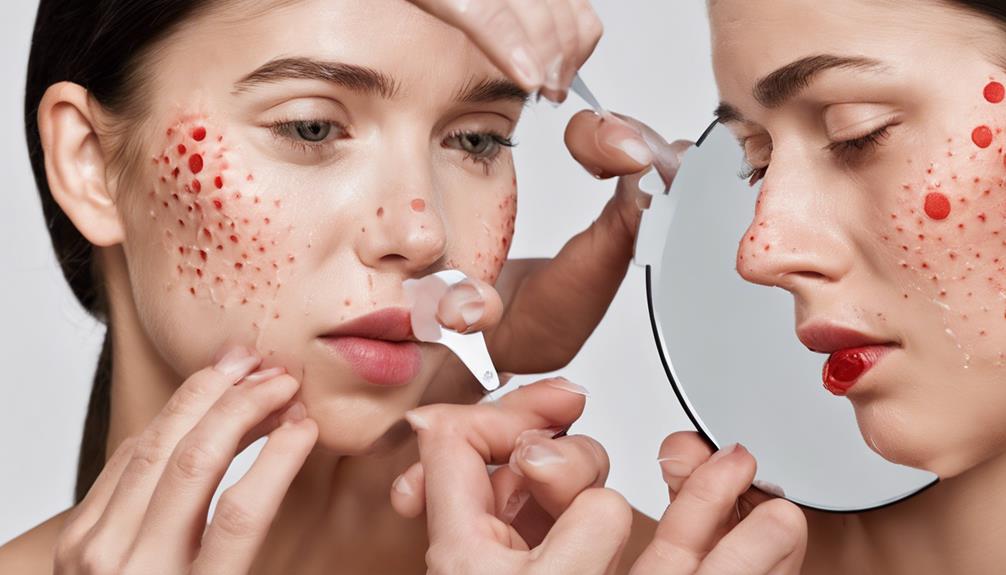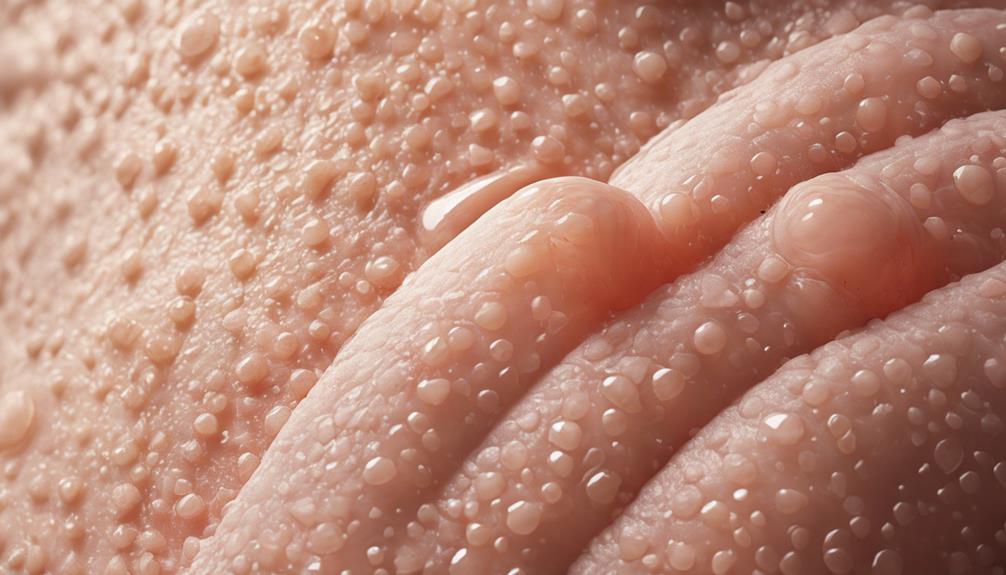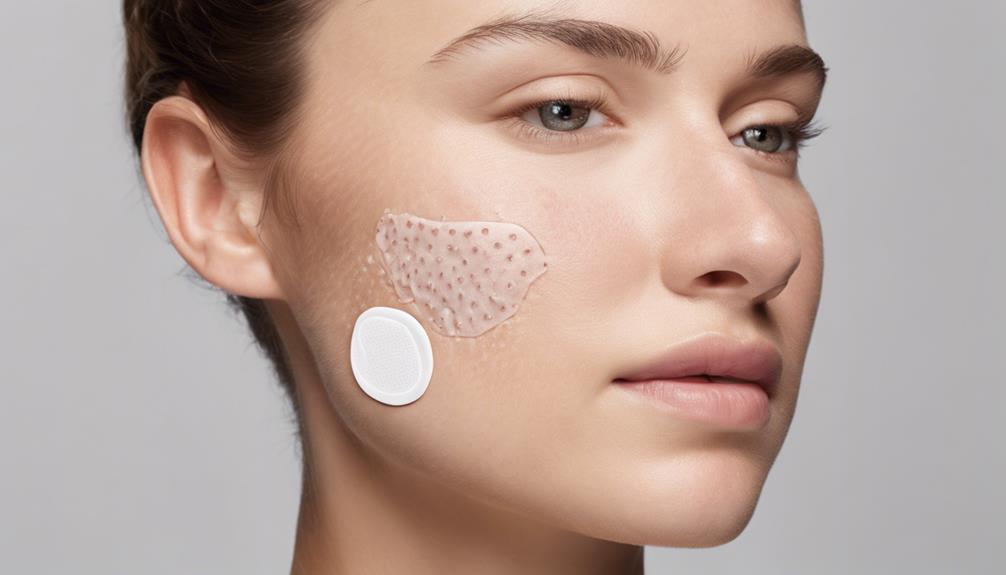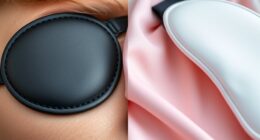You should leave pimple patches on for 6 to 12 hours for the best results, with overnight wear being ideal. This gives them enough time to absorb impurities and reduce blemishes effectively. If you’re dealing with stubborn pimples, you might even wear them for up to 24 hours. Just make sure your skin is clean and dry before applying them. Want to know more about maximizing their effectiveness? Keep going for additional tips!
Key Takeaways
- Leave pimple patches on for 6 to 12 hours for optimal results, ideally overnight to enhance absorption of impurities.
- For stubborn whiteheads, aim for 8 to 12 hours to maximize effectiveness in reducing size and redness.
- Patches can be worn up to 24 hours for persistent blemishes, but regular checks for saturation are essential.
- Ensure skin is clean and dry before application to promote better adhesion and effectiveness of the patch.
- Avoid using patches on non-whiteheads, as they are specifically designed for whitehead treatment and will yield poor results otherwise.
Understanding Pimple Patch Duration

How long should you leave a pimple patch on for best results? For peak effectiveness, you’ll want to keep the patch on for at least six to eight hours, especially for whiteheads.
Many users find that leaving the patch on overnight yields the best results, as it creates a moist environment that draws out impurities like pus and oil. Using patches with additional acne-fighting ingredients can enhance their effectiveness, particularly for stubborn blemishes.
If you’re dealing with blackheads or stubborn cystic acne, consider wearing the patch longer or using additional acne-fighting ingredients.
Remember, the patches act as a protective barrier, helping to reduce inflammation and prevent further irritation.
Just make sure your skin is clean and dry before application for maximum impact!
Ideal Timeframes for Application
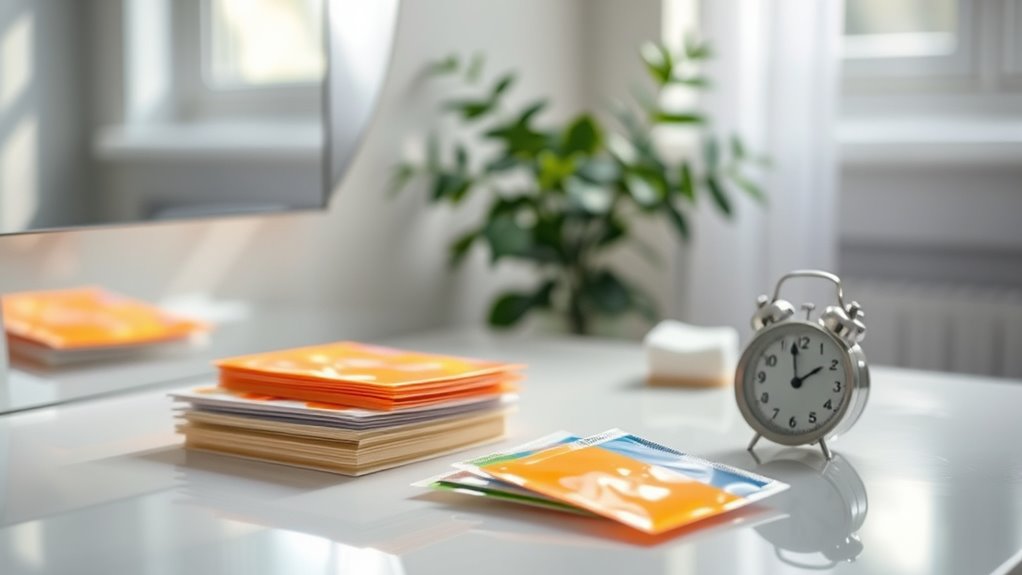
When you’re looking to use pimple patches effectively, timing your application is key. For ideal results, consider leaving patches on overnight for 8-12 hours. This allows the patch to absorb impurities and reduce inflammation while you sleep. Additionally, these patches are most effective on whiteheads, the final stage of a pimple’s life cycle.
Timing your pimple patch application is crucial; aim for 8-12 hours overnight for optimal results.
If you prefer daytime use, you can wear them for 6-8 hours, as many patches are designed to blend with your skin tone. Generally, wearing them for at least 6 hours suffices for effective absorption.
In some cases, stubborn pimples may need extended wear, up to 24 hours. Always apply patches after your skincare routine on clean, dry skin to maximize their effectiveness.
With the right timing, you’ll enhance the healing process of your breakouts efficiently.
Maximum and Minimum Wear Times
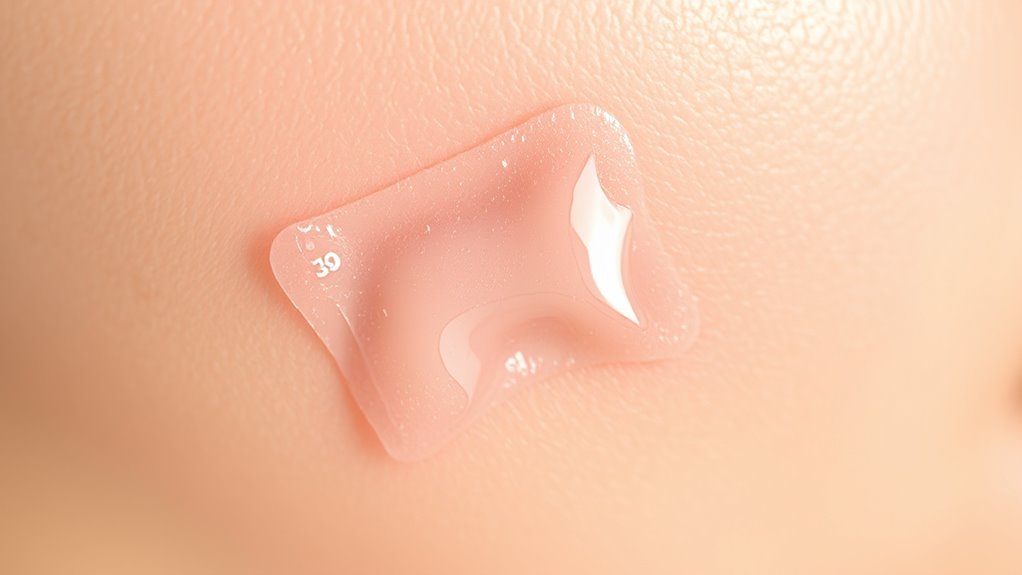
Understanding the maximum and minimum wear times for pimple patches can greatly enhance their effectiveness.
You can wear some hydrocolloid patches for up to 24 hours, especially if they’re thin and discreet. This longer duration is perfect for stubborn breakouts, acting as a protective barrier. Just remember to check them regularly for saturation. Additionally, pimple patches are suitable for all skin types, making them a versatile option for anyone dealing with acne.
On the flip side, patches with active ingredients can work in as little as 4-6 hours. For best results, aim for at least 4 hours to start absorbing impurities.
If you have sensitive skin, shorter wear times are advisable to avoid irritation. Always listen to your skin—if irritation occurs, remove the patch immediately and consider adjusting your wear time in the future.
How Pimple Patches Work

Pimple patches work by utilizing a combination of absorption, protection, and healing properties to tackle blemishes effectively. They absorb excess fluid, pus, and oil from your pimples, which reduces their size and redness.
Acting as a barrier, they protect against dirt and bacteria, preventing infection and further inflammation. The hydrocolloid material creates a moist environment that promotes healing while minimizing scabbing. Hydrocolloid patches are particularly effective in keeping the blemish area clean and encouraging faster recovery. Additionally, these patches are often made with skin-friendly materials that avoid irritation during use. The best pimple patches for cystic acne often contain salicylic acid, which can significantly enhance the treatment process.
By covering the pimple, these patches also curb the urge to pick, reducing the risk of scarring. Ingredients like salicylic acid, tea tree oil, and niacinamide enhance their effectiveness by targeting acne and improving skin texture.
Best Practices for Application
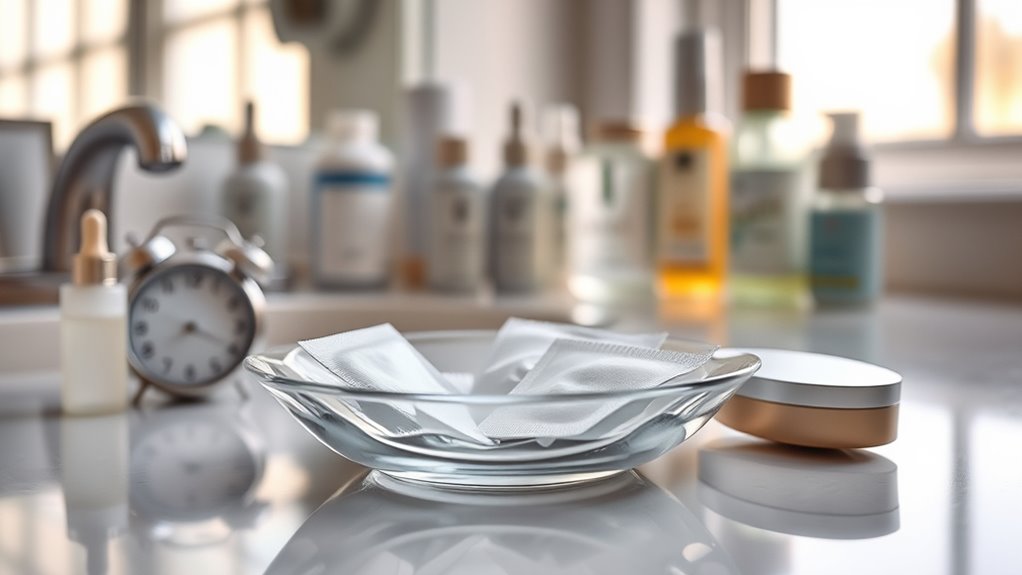
To achieve the best results with pimple patches, start with a clean and dry face. Use a gentle, non-comedogenic cleanser to avoid irritation, and pat your skin dry with a clean towel. Be sure to skip heavy moisturizers, as they can prevent the patch from sticking properly. When choosing a patch, consider your skin type and the type of acne; hydrocolloid patches work well for sensitive skin, while medicated patches can target inflamed pimples. Center the patch over the pimple and press firmly to secure it, making certain minimal air bubbles. Following these steps will help guarantee your pimple patches work their best. Additionally, pimple patches are designed for targeted treatment of breakouts, enhancing their effectiveness when used correctly.
Common Mistakes to Avoid
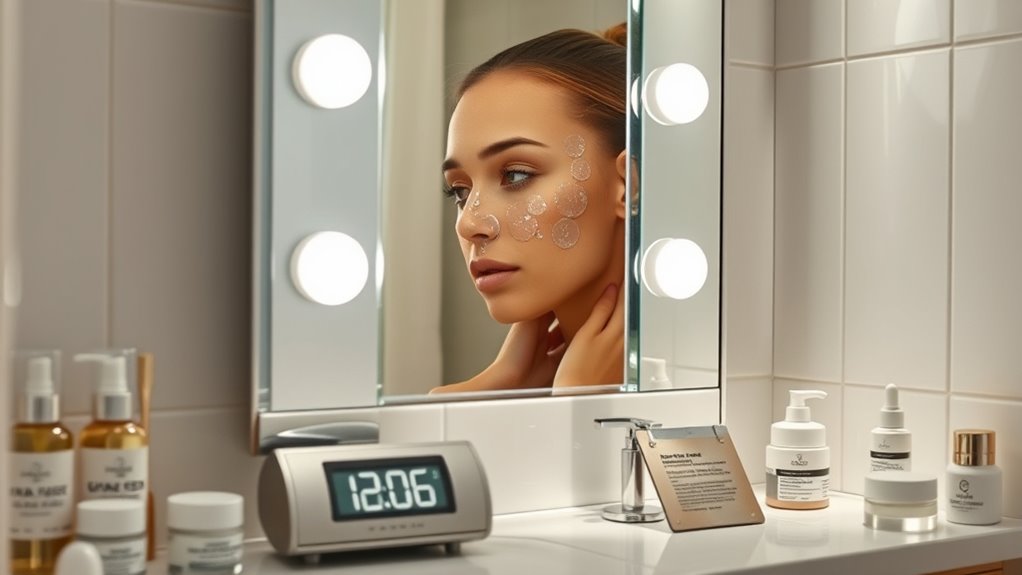
Many people make common mistakes when using pimple patches that can hinder their effectiveness. One major error is leaving patches on for the wrong duration; they should be worn for 6 to 12 hours for ideal results. Applying them on unclean or moisturized skin can also reduce adhesion. Additionally, patches won’t work on non-whiteheads like cystic acne, so verify you’re targeting the right blemish type. Using patches that don’t fully cover your acne can lead to disappointing results, and over-relying on them for deep acne without other treatments may be ineffective. Finally, always follow manufacturer guidelines for active ingredients and patch usage to avoid irritation and maximize benefits, as patches are designed specifically for whiteheads.
Results You Can Expect
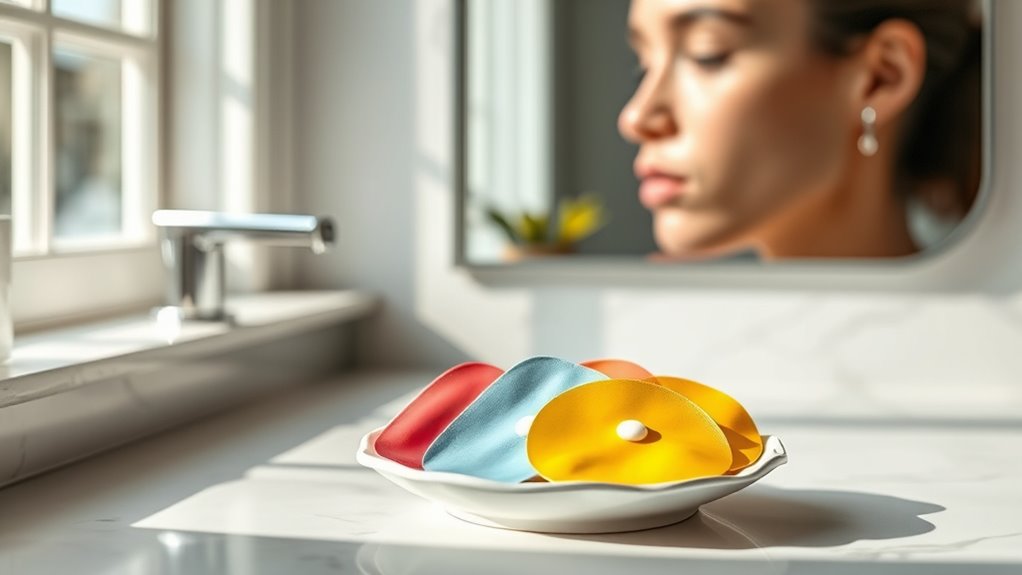
When using pimple patches, you can expect noticeable improvements in the appearance of your blemishes within a few hours. These patches effectively reduce redness, oily secretion, and dark spots by creating a protective barrier over your pimples. For best results, wear them for at least 6 to 8 hours, with overnight application being ideal. You’ll see a significant reduction in pimple size by morning. However, keep in mind that patches work best on surface-level pimples like whiteheads and mightn’t be effective for cystic acne. Regular use can help treat individual pimples, but they won’t prevent future breakouts or address underlying acne causes. Additionally, the inner layer of the patch absorbs fluid from the pimple, enhancing the healing process.
Choosing the Right Pimple Patch
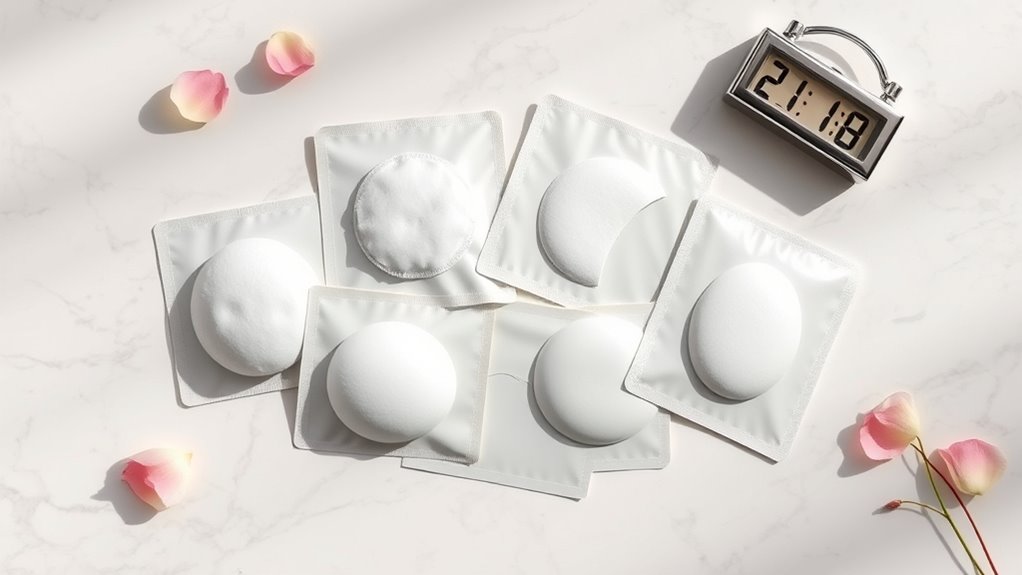
Choosing the Right Pimple Patch
Finding the right pimple patch can greatly enhance your acne treatment experience. Start by considering your skin type. If you have oily skin, hydrocolloid patches are effective at absorbing excess oil.
For sensitive skin, non-medicated patches or those with gentle ingredients work best—just test them first to avoid irritation. Medicated patches containing salicylic acid target inflammation, while microneedling patches deliver active ingredients deeper for stubborn pimples. It’s important to note that standard hydrocolloid patches are ideal for visible fluid-filled whiteheads and help reduce swelling and inflammation.
Pay attention to the acne type; patches are most effective on surface-level whiteheads. Aim for wear times of 6-8 hours, ideally overnight.
Finally, always keep your skin clean and dry before application to guarantee ideal adhesion and results. Choose wisely, and you’ll see better outcomes in your acne journey!
Frequently Asked Questions
Can I Use Pimple Patches on Open Wounds?
Yes, you can use pimple patches on open wounds, but make sure they’re superficial and not infected.
These hydrocolloid patches create a moist environment that promotes healing. Just apply them to clean, dry skin for best results.
If the patches turn white or cloudy, it’s time to remove them, indicating they’ve absorbed impurities.
However, be cautious and consult a healthcare professional if you’re unsure about using them on specific wounds.
Are Pimple Patches Safe for All Skin Types?
You might worry that pimple patches aren’t safe for your skin type, but they’re generally suitable for everyone!
Whether you have normal, oily, combination, or dry skin, these patches can help reduce inflammation and absorb impurities.
Just make sure to check the ingredients, especially if you have sensitive skin.
Always conduct a patch test first to avoid any allergic reactions, and you’re good to go!
How Do I Know When to Remove the Patch?
You’ll know it’s time to remove the pimple patch when it changes color from transparent to white or cloudy, indicating it’s absorbed impurities.
If it starts to peel off or loses adhesion, that’s another sign.
Look for a white mound under the patch, which shows it’s done its job.
Generally, you should replace the patch once it’s reached its absorption limit for ideal effectiveness and skin health.
Can Makeup Be Applied Over Pimple Patches?
Imagine your skin as a canvas, and pimple patches as protective shields. Yes, you can absolutely apply makeup over pimple patches!
Just make sure your skin is clean and dry before placing the patch. Apply makeup gently to avoid disrupting its adhesion.
Opt for light layers, and a matte finish concealer can help blend it seamlessly. This way, you’ll keep your breakout covered while allowing the patch to work its magic.
What Should I Do if the Patch Falls Off?
If your patch falls off, don’t worry! Start by cleansing the skin to guarantee it’s dry and free of oils.
Then, apply a new patch, making sure to do this after your skincare routine to avoid moisture interference. Press it firmly but gently onto your skin for a secure fit.
Keep an eye on the patch’s adhesion and color to check its effectiveness as you go.
Conclusion
To summarize, knowing how long to leave pimple patches on can make all the difference. Aim for the ideal timeframe for maximum effectiveness, avoid common mistakes for the best results, and choose the right patch for your skin type. With proper application and patience, you’ll see clearer skin and reduced blemishes. So, trust the process, stick to your routine, and let those patches work their magic while you carry on with confidence!


